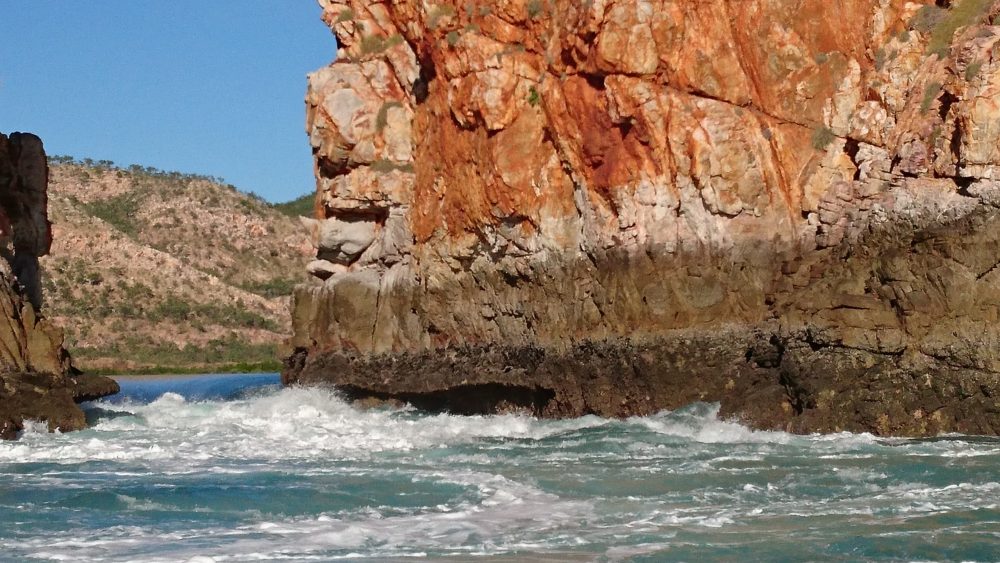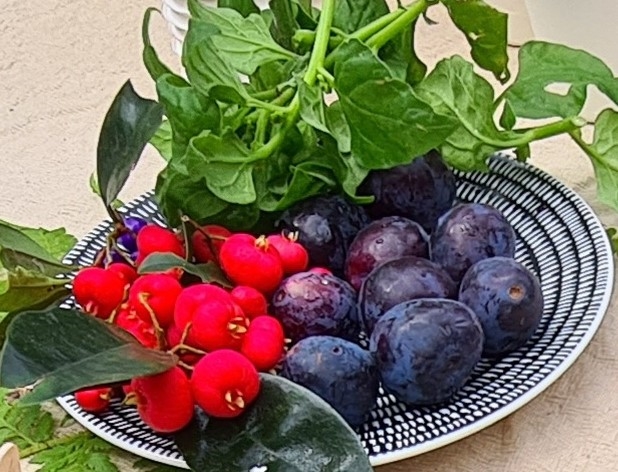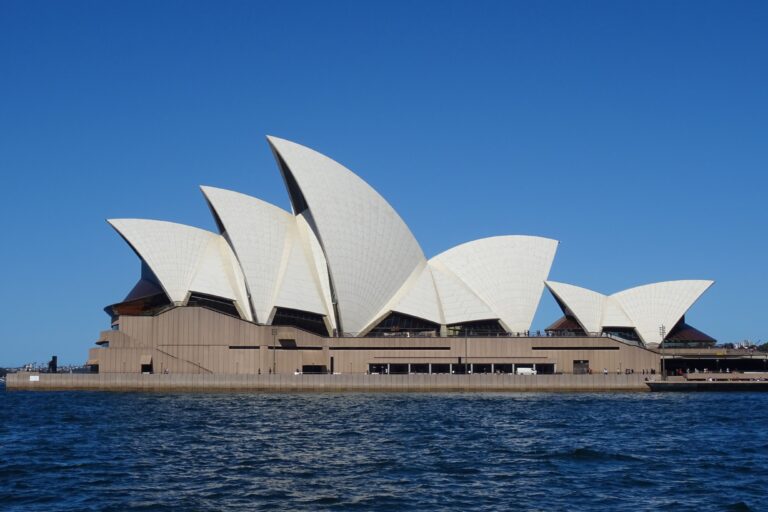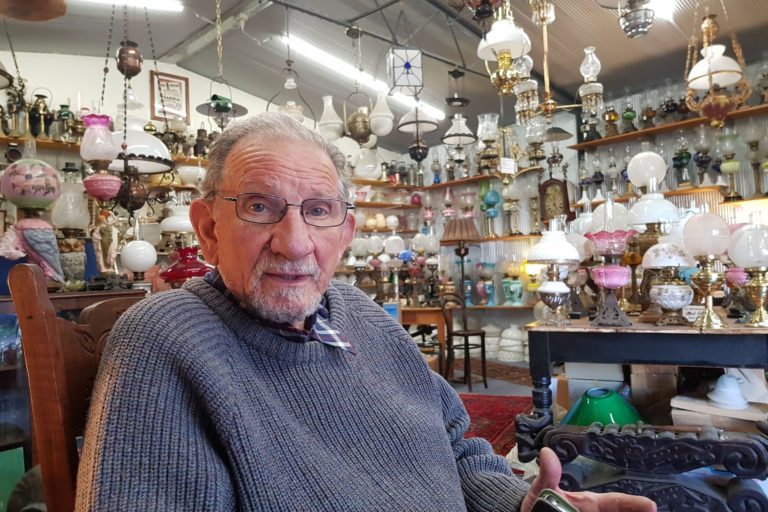By Neena Bhandari
Horizontal Falls (Western Australia), 03.06.2018 (The Indian Express): A starlit sky and a lone street lamp are my sole companions as I wait for the Horizontal Falls Seaplane Adventures (HFSA) tour bus outside my hotel in Broome. At 5am, the bus arrives, packed with travellers — some excited, others wary of boarding a small Cessna Amphibian seaplane.
At the airport, young Tonnia meticulously weighs us and our bags, and assigns seats, before fastening herself into the pilot seat. It is a picture-perfect day to fly low over Broome, the Dampier Peninsula, and hundreds of islands of the Buccaneer Archipelago in Australia’s pristine north-western Kimberley region.
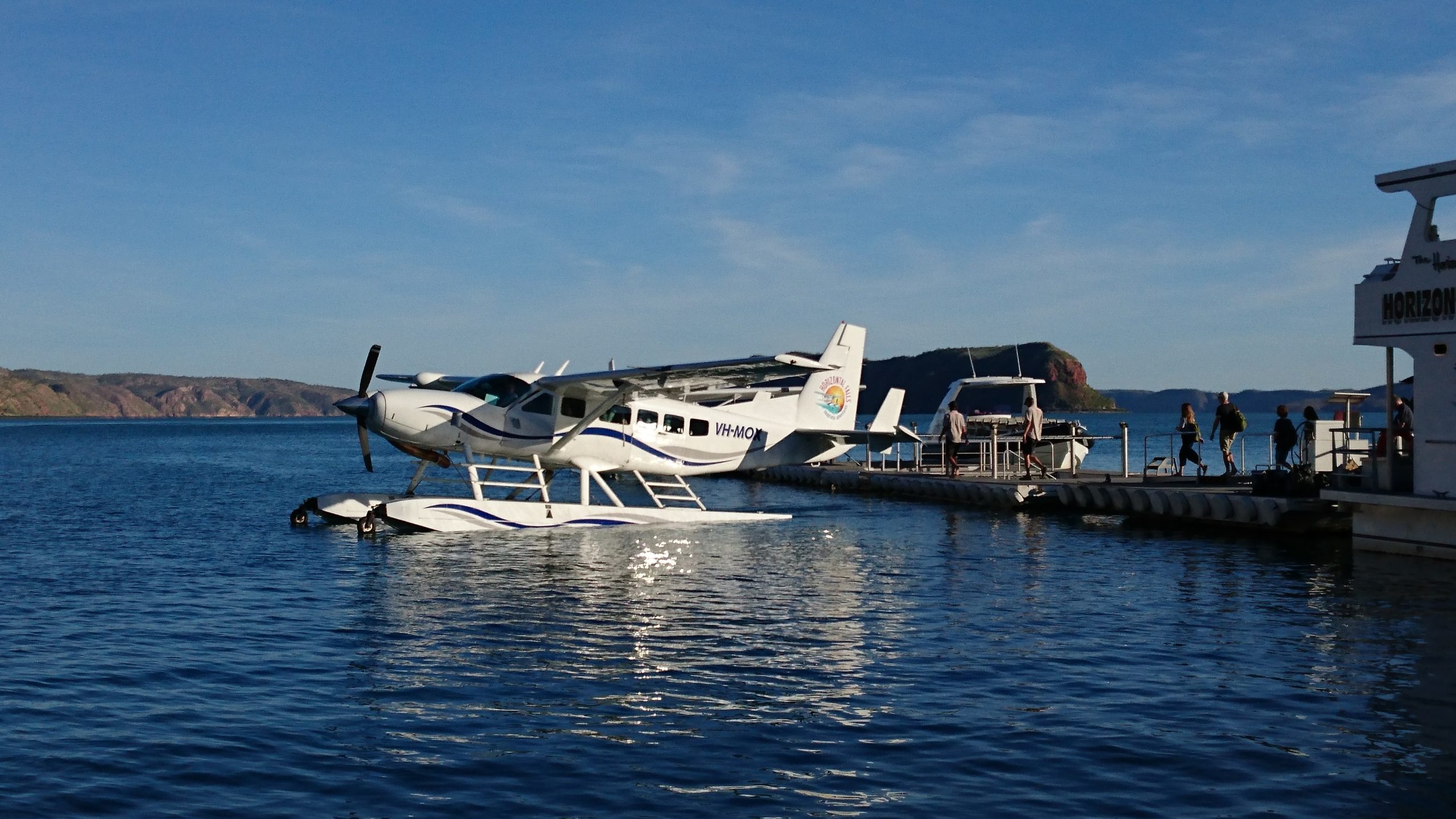
The seaplane touches down smoothly on the glassy blue waters of Talbot Bay in the Buccaneer Archipelago. The floating base has a houseboat, restaurant and a natural aquarium. A hot breakfast awaits us on the top deck, with spectacular 360-degree views of the rust-red sandstone cliffs of the McLarty Ranges.
The ranges have two parallel ridges sitting approximately 300m apart. The ridge closer to the ocean has a 20m-wide gorge and the one near the Bay has a narrow 7m gorge. During high tide, waves can reach over 10m, a million litres of water are squeezed through this narrow gorge every second. This natural phenomenon creates the effect of a horizontal waterfall described by Sir David Attenborough as “Australia’s most unusual natural wonder”.
To witness the amazing power and fury unleashed by the tide, we board a 900-HP fast boat ensconced in our fluorescent-orange life jackets. Our skipper, Christen, skims the boat to the mouth of the Bay and steers a few laps in slow motion in preparation for the thrill. As the neap tide rises to about five metres, he carefully navigates the boat through the hurtling waters. The boat bounces across the turbulent swirl of water to rest in the calmer waters between the two ridges. Loud cheers of excitement are muffled by the sound of the cascading water. As the tide turns, he accelerates the boat through the churning frothy waters back into the Bay.
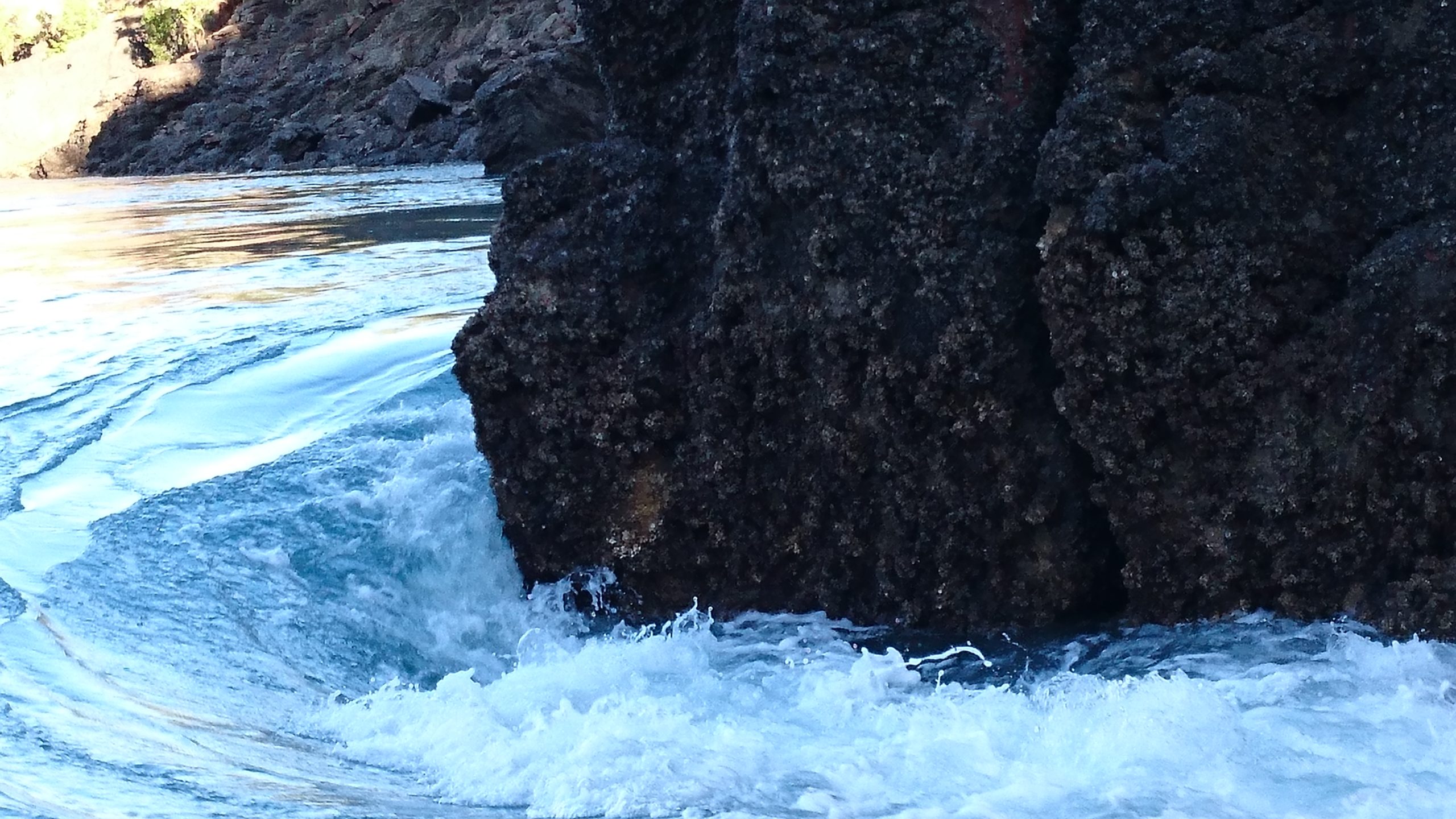
Tides are an integral part of the ecosystem here with alternating neap and spring tides changing direction every six hours. It is best to visit this remote part of Australia in the dry season, from May to October, rains and cyclones can create havoc during the wet months from November to April.
Back at the base, one can swim in an enclosure adjacent to the shark cage with big bull and tawny sharks, before hopping on to another boat for a slow cruise through Cyclone Creek. It is here that boats are safely anchored during the wet months. Sailing beneath these lofty, craggy sandstone cliffs, dotted with spinifex, one can see the intricate geological formations created over the past two billion years.
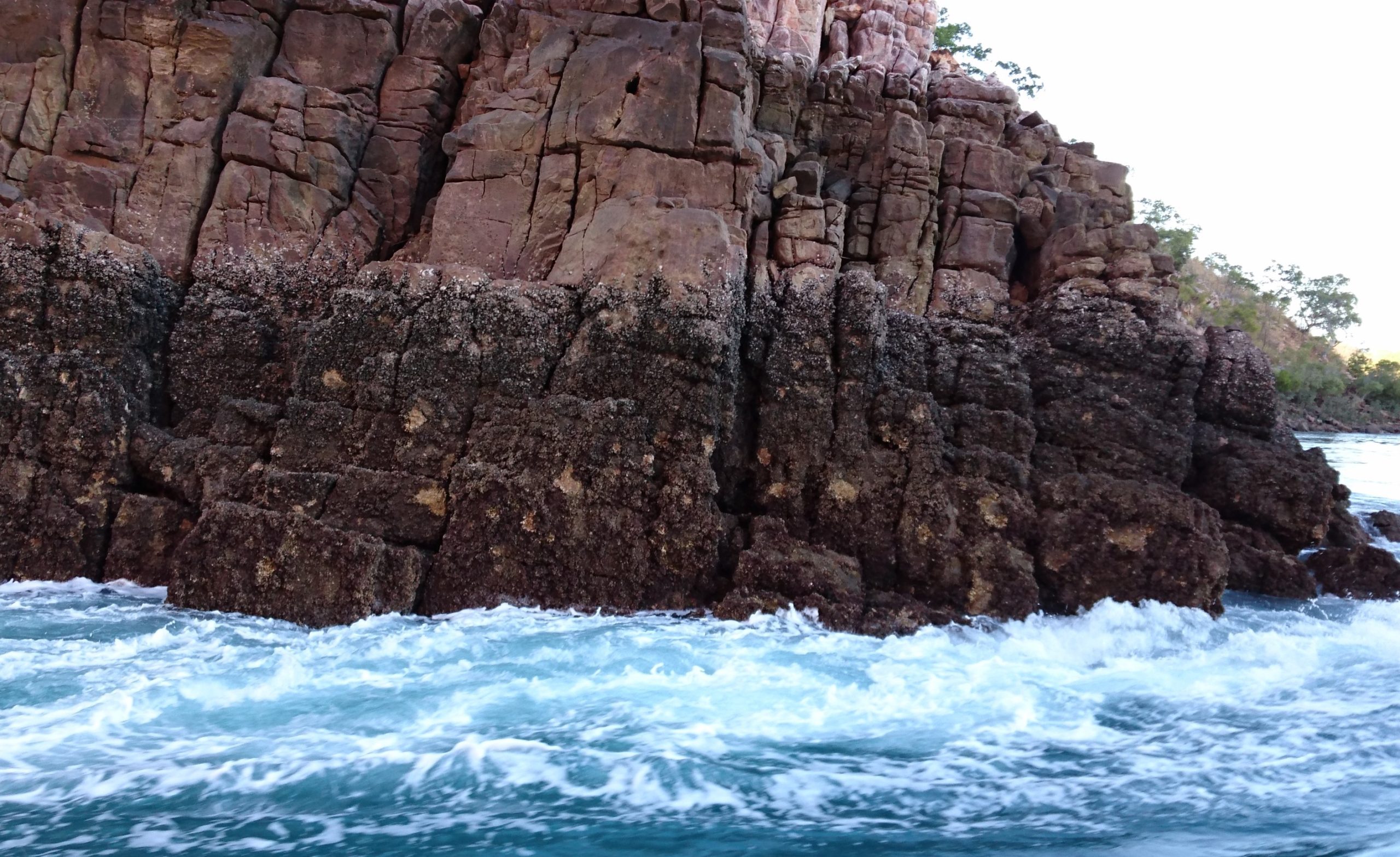
It inspires me to explore the rugged beauty of Australia’s outback on a four-wheel bus-truck back to Broome. The partially unsealed 220km road meanders through the ochre-tinted cliffs. Our first stop is One Arm Point or Ardyaloon as it is called in the indigenous Bardi language. It has a trochus shell hatchery with a range of local art, jewellery and artefacts on sale. Only the local Aboriginal people are allowed to collect this snail shell, which has a conical spire and a flat base.
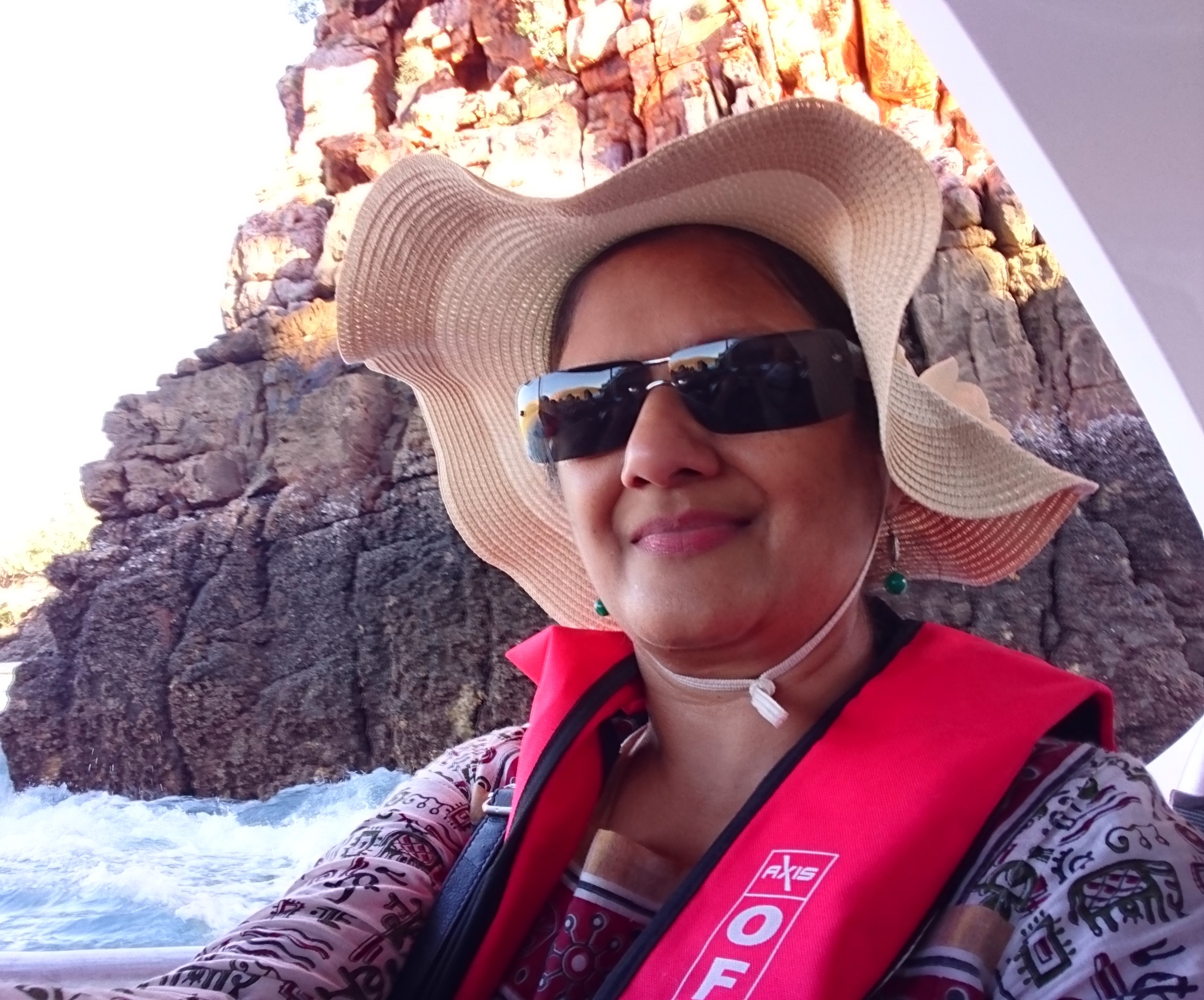
Along the way, flocks of crimson rosellas, pigeons and rainbow lorikeets can be seen flitting amid the bright yellow wattle bushes. At Cape Leveque, located at the tip of the Dampier Peninsula, bright-red wrinkled cliffs and sand dunes descend on to the white beaches. Here, the Aborigines operate guided walks, mud-crabbing and spearfishing tours. One can stay at the Kooljaman wilderness resort with safari tents, log cabins and camping shelters owned and operated by the Aboriginal Bardi and Jawi people and taste native bush food at the restaurant.
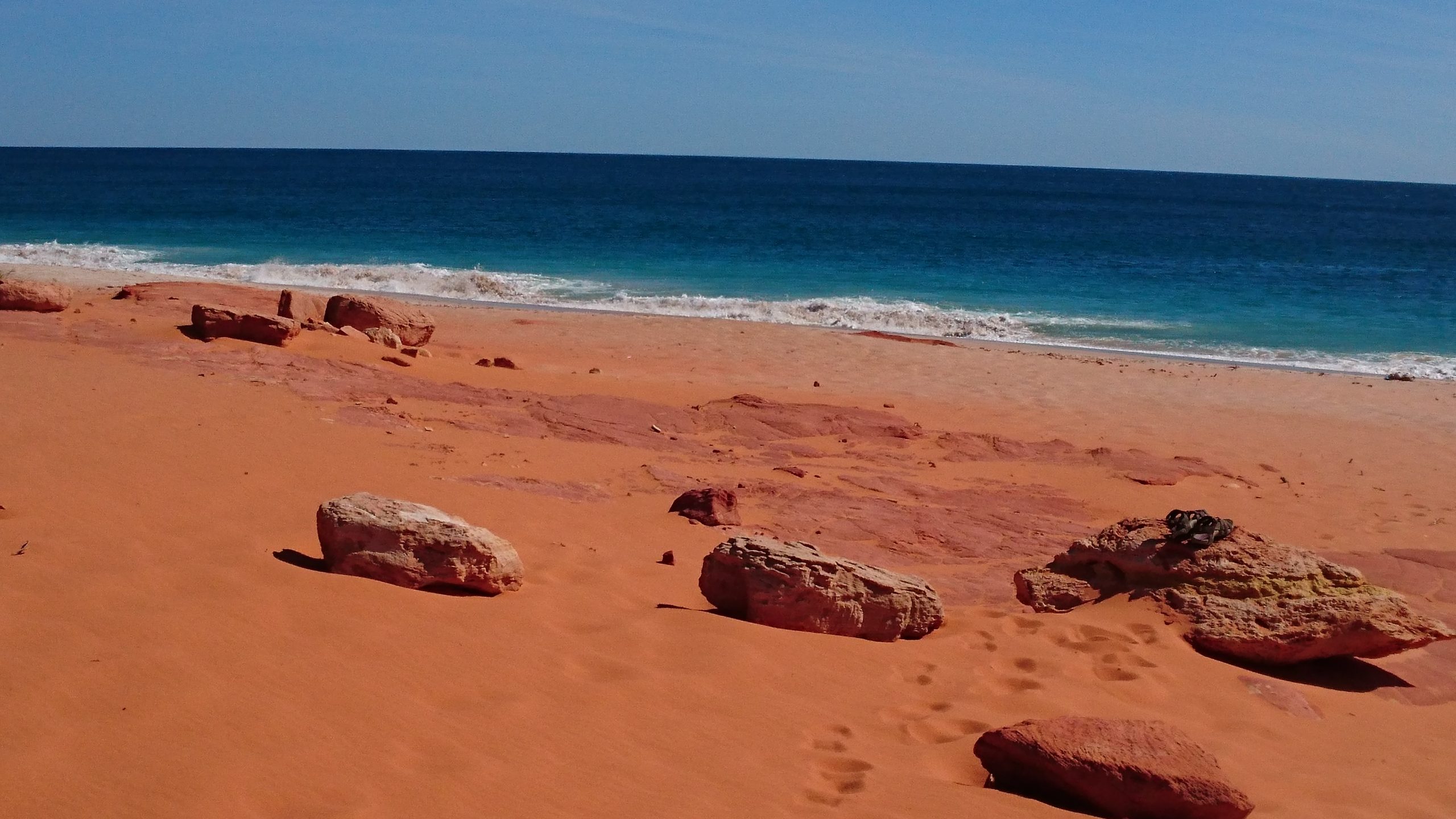
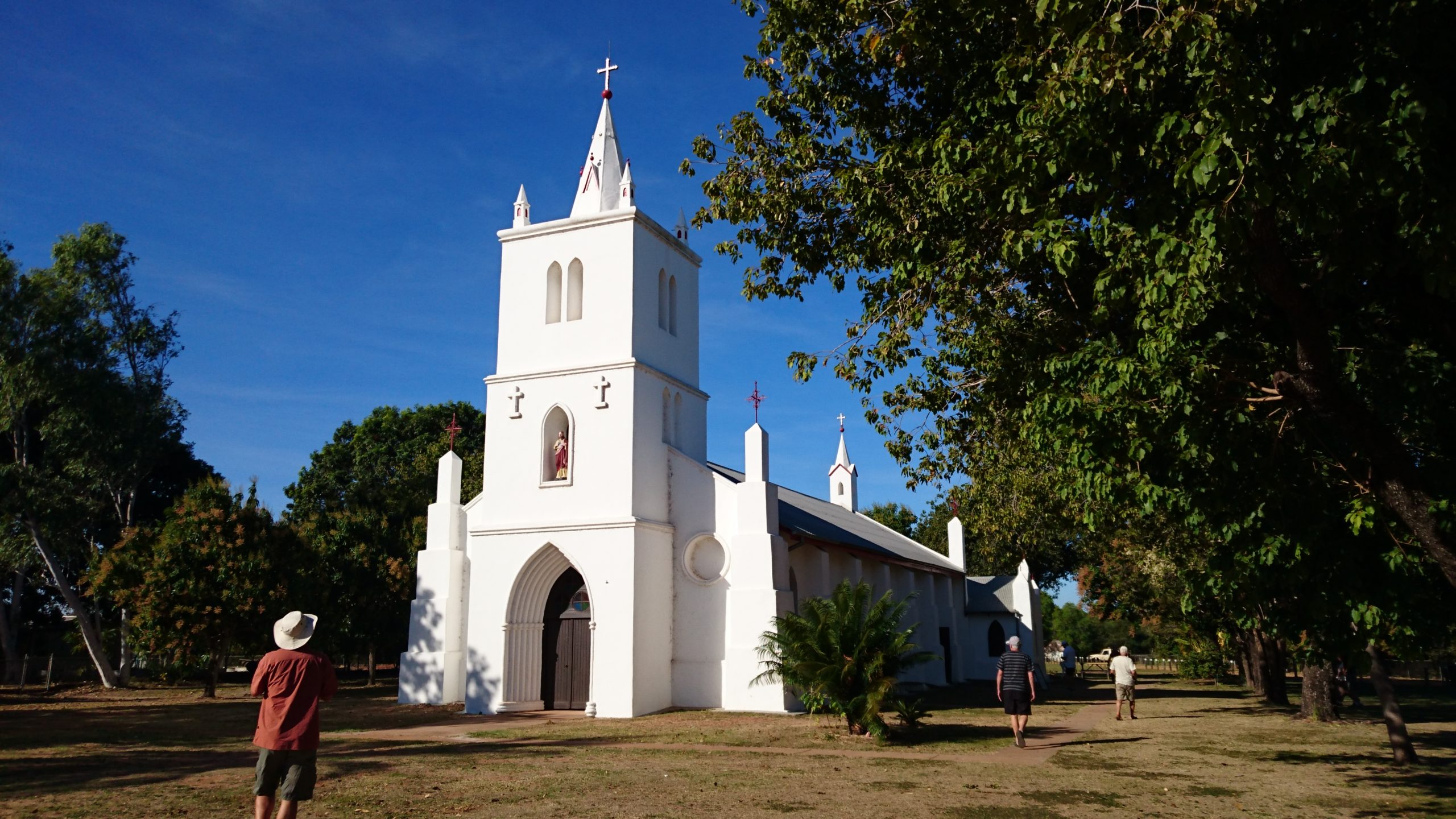
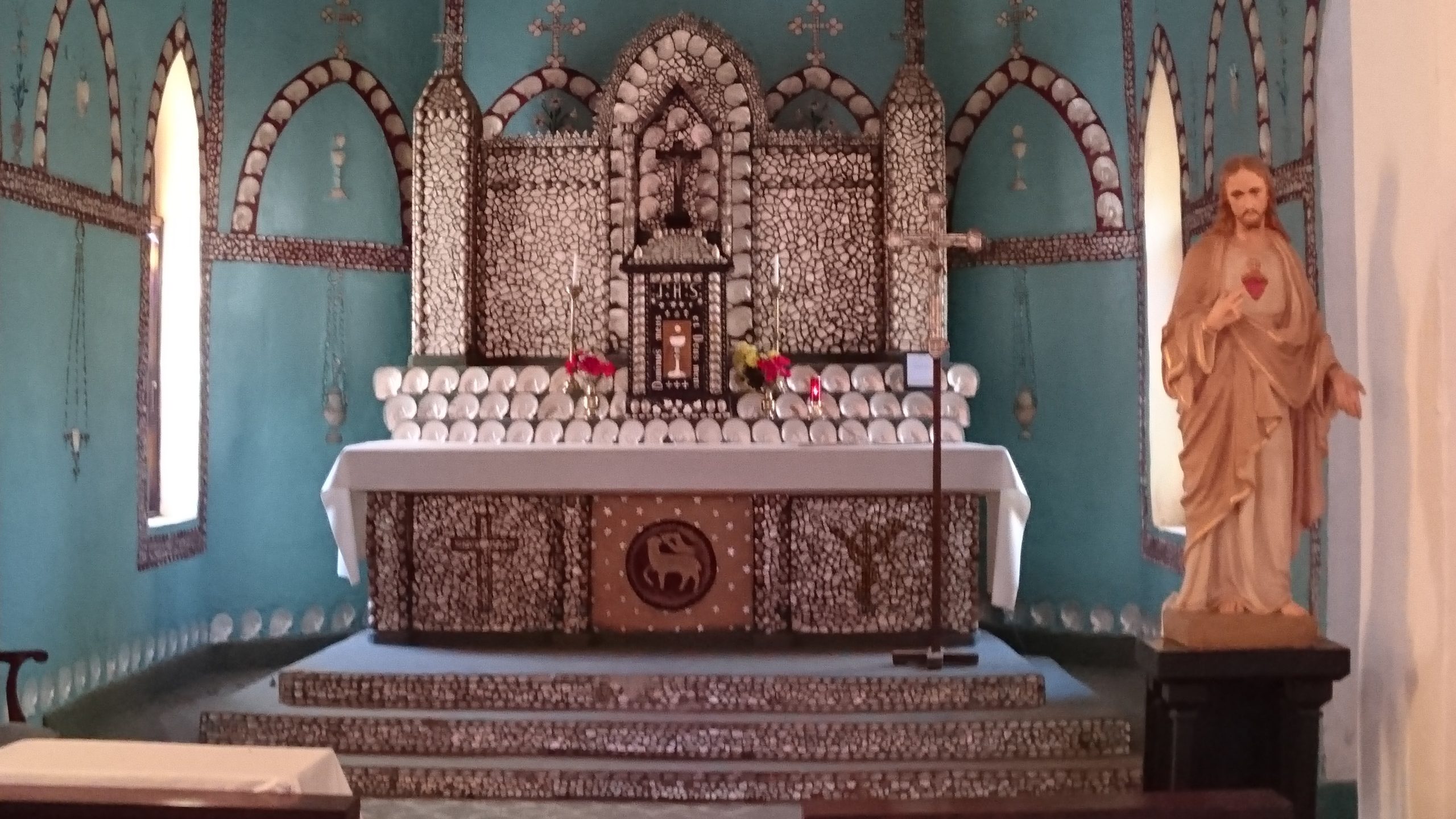
Our last stop is Beagle Bay, home of the Nyul Nyul indigenous people. Apart from a flock of cacophonic cockatoos, the town is deserted. Perhaps, everyone is indoors to escape the harsh, tropical sun. The Sacred Heart Church stands tall next to the local school. The church is known for its lustrous pearl shell altar built in 1917 by the Aborigines and the Pallotine monks.
Back on the bus, we reflect on the 12 exhilarating hours of adventure we just had through one of Australia’s most remote, untouched landscapes.
© Copyright Neena Bhandari. All rights reserved. Republication, copying or using information from neenabhandari.com content is expressly prohibited without the permission of the writer and the media outlet syndicating or publishing the article.

